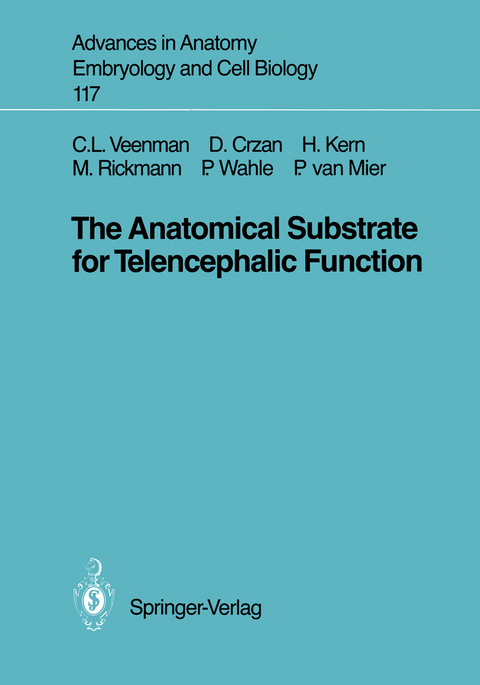The Anatomical Substrate for Telencephalic Function
Springer Berlin (Verlag)
978-3-540-51229-5 (ISBN)
1 Introduction: Theoretical Basis for Telencephalic function.- 1.1 Telencephalic function.- 1.2 Dual Sensorimotor and Selection System.- 1.3 Position of the Pallium.- 1.4 Working Hypotheses.- 1.5 Choice of Animal.- 1.6 Methods Employed.- 2 Methods and Results: Study of Prosencephalic Connectivity and Structural Organization.- 2.1 Extra-experimental Procedures.- 2.2 Experimental Procedures.- 2.3 Horseradish Peroxidase Labeling.- 2.4 Display of the Forebrain and Injection Sites.- 2.5 Horseradish Peroxidase Injections in the Pallium (1-12).- 2.6 Horseradish Peroxidase Injections in Extrapallial Telencephalic Areas (13-16).- 2.7 Horseradish Peroxidase Injections in Extratelencephalic Regions (17-22).- 3 Methods and Results: Electron Microscopic Study of HRP-Labeled Elements.- 3.1 Preparation of the Electron Microscopic Material.- 3.2 Electron Microscopic Material.- 3.3 Conclusions.- 4 Methods and Results: Distributions of Opioids, Substance P, and Serotonin.- 4.1 Immunohistochemistry.- 4.2 Distributions.- 4.3 Conclusions.- 5 Discussion: Hodological, Functional, and Comparative Concepts.- 5.1 Connectivity of the Telencephalon.- 5.2 Midline Crossing Connections.- 5.3 Function of the Pallium.- 5.4 Comparisons with Other Vertebrates.- 5.5 Conclusions.- 6 Summary.- References.
| Erscheint lt. Verlag | 13.12.1989 |
|---|---|
| Reihe/Serie | Advances in Anatomy, Embryology and Cell Biology |
| Zusatzinfo | XI, 110 p. 33 illus. |
| Verlagsort | Berlin |
| Sprache | englisch |
| Maße | 170 x 242 mm |
| Gewicht | 290 g |
| Themenwelt | Studium ► 1. Studienabschnitt (Vorklinik) ► Anatomie / Neuroanatomie |
| Naturwissenschaften ► Biologie ► Humanbiologie | |
| Naturwissenschaften ► Biologie ► Zoologie | |
| Schlagworte | brain • forebrain • Information Processing • Reptiles • Vertebrates |
| ISBN-10 | 3-540-51229-2 / 3540512292 |
| ISBN-13 | 978-3-540-51229-5 / 9783540512295 |
| Zustand | Neuware |
| Haben Sie eine Frage zum Produkt? |
aus dem Bereich




